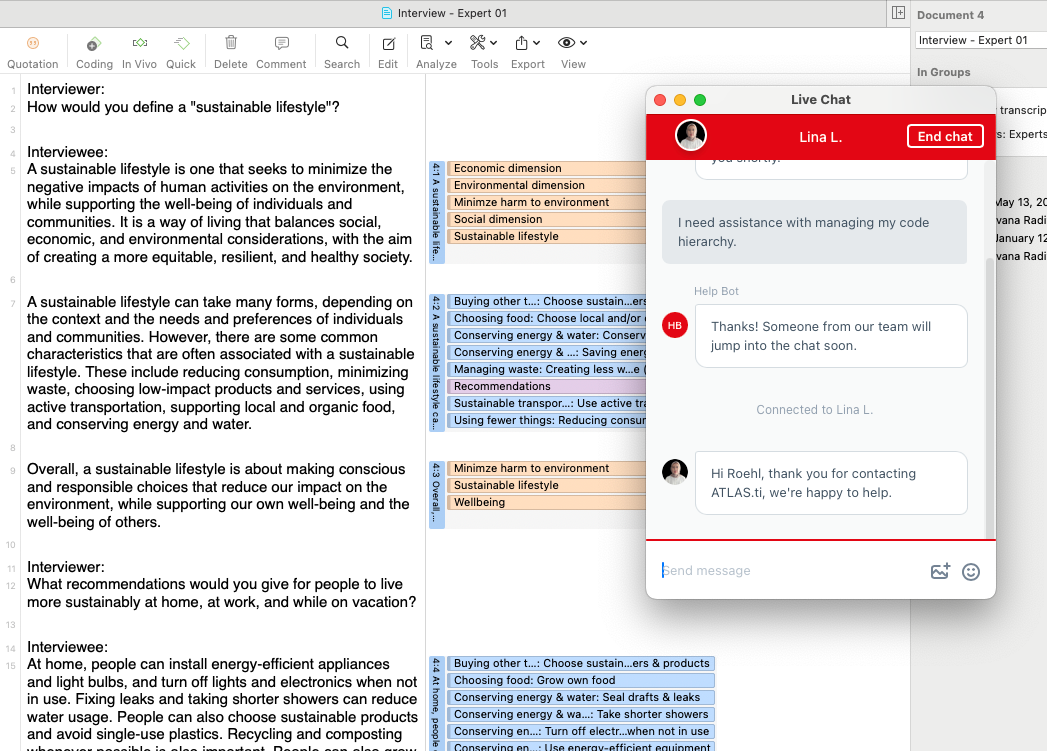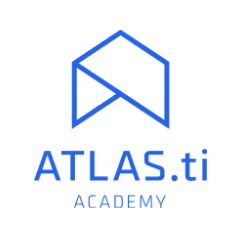Dovetail vs. ATLAS.ti | Best Qualitative Data Analysis Software
Thinking about Dovetail for analyzing your qualitative data? Look at the key differences between ATLAS.ti and Dovetail to see why ATLAS.ti is the superior solution for qualitative researchers.
|
Dovetail
|
ATLAS.ti
|
|
|---|---|---|
| AI-powered Data Analysis | ||
| AI Summaries | ||
| AI Suggested Codes | ||
| AI-powered coding | ||
| Conversational AI | ||
| Intentional AI Coding | ||
| Paper Search capabilities | ||
| Free access to 200M+ papers through Paper Search 2.0 | ||
| Streamlined literature search | ||
| Advanced filters for relevant papers | ||
| Tailored AI summaries of top papers | ||
| Full integration with research projects | ||
| Auto-Coding Tools | ||
| Sentiment Analysis | ||
| Focus Group Coding | ||
| Concepts Tool | ||
| Opinion Mining | ||
| Named Entity Recognition | ||
| Visualizations | ||
| Treemaps | ||
| Bar charts | ||
| Networks | ||
| Code clouds | ||
| Force-directed graphs | ||
| Sankey diagrams | ||
| Compatible Social Media Data | ||
| Twitter/X | ||
| YouTube | ||
| TikTok | ||
| Compatible Text Files | ||
| Microsoft Word | ||
| Plain text | ||
| PDF files | ||
| Rich text files | ||
| Open Office | ||
| HTML files | ||
| Open Office XML | ||
| Other Compatible Files | ||
| Video files | ||
| Audio files | ||
| Images | ||
| Geographical data | ||
| MOBI eBook files | ||
| Support | ||
| Technical support | ||
| Methodological guidance | ||
| Project optimization | ||
| 24/5 support via telephone, email, and live chat | ||
| Miscellaneous | ||
| Unlimited access to all software features and platforms with a single license | ||
| Real-time, online collaboration | ||
| Project sharing | ||
| Code-code and code-document analyses | ||
| Memos | Simple memoing capabilities | Full flexibility to link memos to all project entities |
| Networks | Limited layout options | Automatic layout options and customizable links |
| Rich data retrieval capabilities | Limited capabilities in retrieving tags | Simple interface for intricate data retrieval in Query Tool |
| Text analysis | Simple text retrieval tools | Full analysis capabilities in Text Search, Word Frequencies, and Concepts |
| AI-powered Data Analysis |
|
AI Summaries
|
|
AI Suggested Codes
|
|
AI-powered coding
|
|
Conversational AI
|
|
Intentional AI Coding
|
| Paper Search capabilities |
|
Free access to 200M+ papers through Paper Search 2.0
|
|
Streamlined literature search
|
|
Advanced filters for relevant papers
|
|
Tailored AI summaries of top papers
|
|
Full integration with research projects
|
| Auto-Coding Tools |
|
Sentiment Analysis
|
|
Focus Group Coding
|
|
Concepts Tool
|
|
Opinion Mining
|
|
Named Entity Recognition
|
| Visualizations |
|
Treemaps
|
|
Bar charts
|
|
Networks
|
|
Code clouds
|
|
Force-directed graphs
|
|
Sankey diagrams
|
| Compatible Social Media Data |
|
Twitter/X
|
|
YouTube
|
|
Facebook
|
|
Instagram
|
|
TikTok
|
| Compatible Text Files |
|
Microsoft Word
|
|
Plain text
|
|
PDF files
|
|
Rich text files
|
|
Open Office
|
|
HTML files
|
|
Open Office XML
|
| Other Compatible Files |
|
Video files
|
|
Audio files
|
|
Images
|
|
Geographical data
|
|
MOBI eBook files
|
| Support |
|
Technical support
|
|
Methodological guidance
|
|
Project optimization
|
|
24/5 support via telephone, email, and live chat
|
| Miscellaneous |
|
Unlimited access to all software features and platforms with a single license
|
|
Real-time, online collaboration
|
|
Project sharing
|
|
Code-code and code-document analyses
|
|
Memos
Simple memoing capabilities |
|
Networks
Limited layout options |
|
Rich data retrieval capabilities
Limited capabilities in retrieving tags |
|
Text analysis
Simple text retrieval tools |
| AI-powered Data Analysis |
|
AI Summaries
|
|
AI Suggested Codes
|
|
AI-powered coding
|
|
Conversational AI
|
|
Intentional AI Coding
|
| Paper Search capabilities |
|
Free access to 200M+ papers through Paper Search 2.0
|
|
Streamlined literature search
|
|
Advanced filters for relevant papers
|
|
Tailored AI summaries of top papers
|
|
Full integration with research projects
|
| Auto-Coding Tools |
|
Sentiment Analysis
|
|
Focus Group Coding
|
|
Concepts Tool
|
|
Opinion Mining
|
|
Named Entity Recognition
|
| Visualizations |
|
Treemaps
|
|
Bar charts
|
|
Networks
|
|
Code clouds
|
|
Force-directed graphs
|
|
Sankey diagrams
|
| Compatible Social Media Data |
|
Twitter/X
|
|
YouTube
|
|
Facebook
|
|
Instagram
|
|
TikTok
|
| Compatible Text Files |
|
Microsoft Word
|
|
Plain text
|
|
PDF files
|
|
Rich text files
|
|
Open Office
|
|
HTML files
|
|
Open Office XML
|
| Other Compatible Files |
|
Video files
|
|
Audio files
|
|
Images
|
|
Geographical data
|
|
MOBI eBook files
|
| Support |
|
Technical support
|
|
Methodological guidance
|
|
Project optimization
|
|
24/5 support via telephone, email, and live chat
|
| Miscellaneous |
|
Unlimited access to all software features and platforms with a single license
|
|
Real-time, online collaboration
|
|
Project sharing
|
|
Code-code and code-document analyses
|
|
Memos
Full flexibility to link memos to all project entities |
|
Networks
Automatic layout options and customizable links |
|
Rich data retrieval capabilities
Simple interface for intricate data retrieval in Query Tool |
|
Text analysis
Full analysis capabilities in Text Search, Word Frequencies, and Concepts |
Important considerations for analyzing qualitative data
What goes into the decision-making process of choosing the right qualitative data analysis software? Researchers have many choices and many different needs, so let's explore what to look out for.
Comparing Dovetail vs. ATLASti
Dovetail and ATLAS.ti can both handle and analyze qualitative data, but what sets ATLAS.ti apart? Here are some of the key features where ATLAS.ti excels at qualitative data analysis over Dovetail.
- Coding and Tagging Capabilities
- Literature Review and Research Integration
- Automated Coding Tools
- Data Analysis Flexibility
- Visualizations and Reporting
- Memoing and Theoretical Insights
- User Interface and Usability
- Data Organization and Management
- Teamwork and Collaboration
- Data Types and Compatibility
- Survey Analysis Tools
- Support and Training
Coding and Tagging Capabilities
When comparing ATLAS.ti and Dovetail in terms of data coding capabilities, ATLAS.ti is both flexible and powerful. ATLAS.ti offers a robust manual coding process that allows users to highlight and code text seamlessly, with options to apply codes quickly through features like Quick Coding and Code In Vivo. This facilitates the creation of a detailed and organized coding structure, which is essential for rigorous qualitative analysis. Additionally, ATLAS.ti's support for hierarchical coding and sub-coding enables researchers to develop complex and nuanced coding schemes tailored to their research questions. Dovetail, while user-friendly and efficient for tagging, lacks the same level of granularity and flexibility. Its tagging system is more suited for surface-level categorization and lacks the depth required for more comprehensive qualitative analysis. Moreover, ATLAS.ti's integration with AI-driven coding tools further enhances its capabilities, allowing for automated coding that can be tailored to specific research inquiries. This gives ATLAS.ti a significant edge in handling complex data sets and generating meaningful insights. In contrast, Dovetail's tagging tools are more limited, making ATLAS.ti the preferred choice for researchers needing advanced coding functionalities.
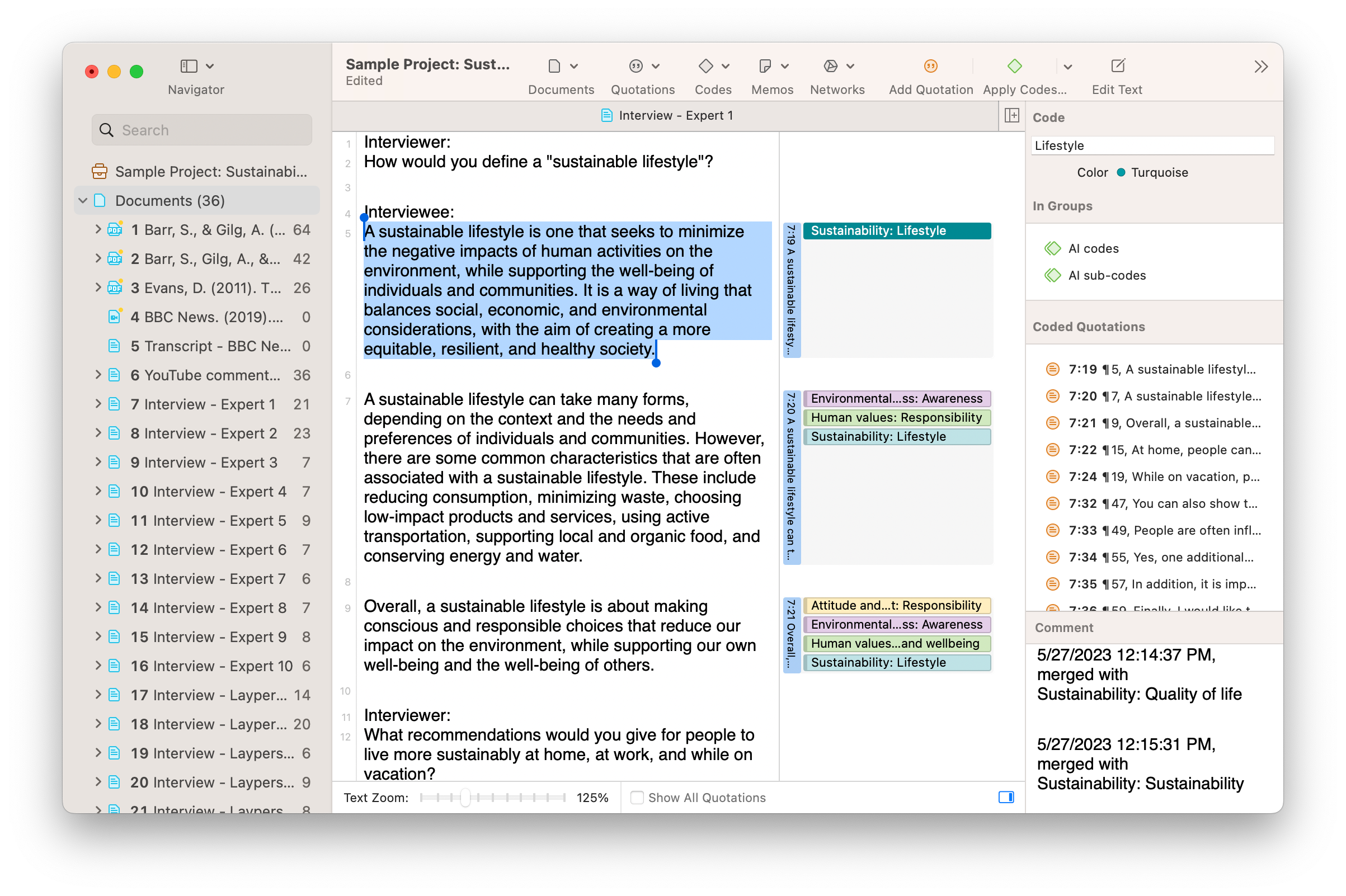
Literature Review and Research Integration
When it comes to literature review and research integration, ATLAS.ti offers advanced features that help researchers conduct research at every stage of the process. ATLAS.ti allows seamless integration of reference manager data from programs like Zotero and EndNote, facilitating the incorporation of your research library into your qualitative analysis. Moreover, ATLAS.ti Web's unique Paper Search tool enables users to search over 200 million journal articles directly within the platform, significantly enhancing the literature review process. This feature, combined with tailored AI Summaries to answer questions about the literature, helps researchers efficiently build a comprehensive library of relevant literature, which directly informs their data analysis. On the other hand, Dovetail lacks such an integrated approach, making it more challenging to align literature reviews with ongoing data analysis. While Dovetail provides basic options for tagging research materials, it doesn't offer the same depth of integration or the ability to conduct literature searches within the platform itself. This makes ATLAS.ti a more powerful tool for researchers who need to connect their literature reviews directly with their data analysis, streamlining the research process and ensuring that all relevant information is easily accessible within a single environment.
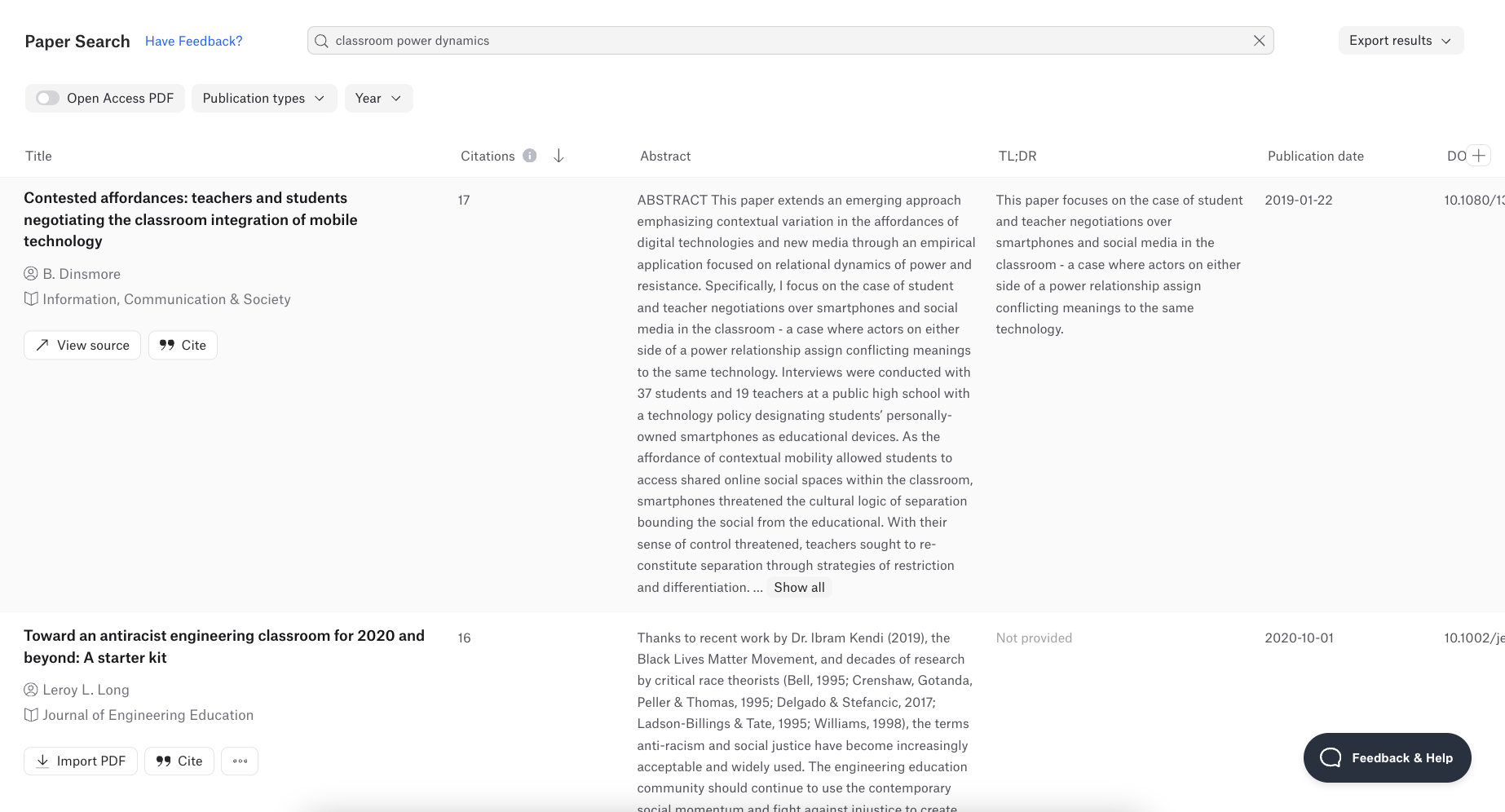
Automated Coding Tools
ATLAS.ti's AI-powered and automated coding tools offer a comprehensive and customizable approach to qualitative data processing, giving it a significant advantage over Dovetail. ATLAS.ti allows researchers to utilize artificial intelligence to automate coding based on specific research questions and objectives. This flexibility in AI-driven coding helps in organizing complex data sets into meaningful categories, facilitating deeper analysis. Dovetail, while incorporating AI in some features, provides only basic summaries of data without auto-coding capabilities. On the other hand, ATLAS.ti's AI-powered tools such as Conversational AI, AI Suggested Codes and Intentional AI Coding can identify core insights in your data and help you auto-code key segments of data quickly and easily. Additionally, ATLAS.ti's Conversational AI tool enhances data synthesis across multiple documents, enabling researchers to explore overarching themes and trends effectively. ATLAS.ti’s robust AI-powered tools ensure that researchers can conduct detailed and nuanced analysis with greater efficiency, making it the preferred choice for complex research projects. Additionally, ATLAS.ti's automation extends to Sentiment Analysis, Opinion Mining, Text Search, Concepts, Word Frequencies, and Named Entity Recognition, providing a comprehensive suite of tools that support thorough and valuable data analysis. This makes ATLAS.ti the preferred choice for researchers seeking to leverage automation for richer and more precise insights, ensuring that their analysis is both efficient and comprehensive.
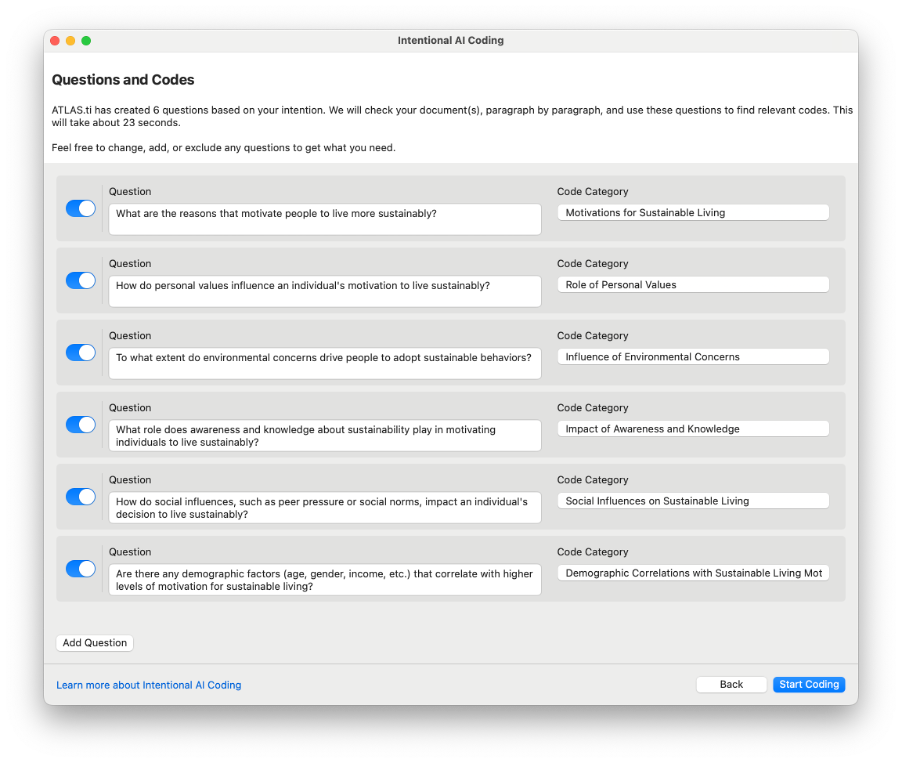
Data Analysis Flexibility
ATLAS.ti offers flexible and robust data analysis capabilities, enabling researchers to adapt the platform to various research needs. With its advanced Query Tool, users can create complex queries using Boolean operators, proximity searches, and other criteria, allowing for detailed exploration of coded data. This tool streamlines the analysis process by accommodating multiple criteria in a single query, something that often requires several steps in other platforms like Dovetail. Moreover, ATLAS.ti’s interface allows seamless integration of different analysis tools, such as Code Co-Occurrence and Code-Document Analysis, within a unified workspace. This integration enables researchers to quickly cross-examine data from multiple angles and create visualizations that capture the relationships between codes and documents. In contrast, Dovetail provides a more linear approach to data analysis, which may limit researchers who need to perform complex, multi-faceted analyses. ATLAS.ti’s ability to handle intricate data analysis tasks while remaining user-friendly makes it the superior choice for researchers seeking both depth and efficiency in their qualitative research.

Visualizations and Reporting
ATLAS.ti provides more pathways to visualizations and reporting than Dovetail, offering a range of tools that transform complex qualitative data into clear, impactful visuals. The platform provides advanced data visualization capabilities like Sankey diagrams, force-directed graphs, and treemaps, allowing researchers to illustrate code distributions and themes comprehensively. These visualizations are fully integrated with the coding and analysis process, making it easy to transition from data exploration to creating visuals that support research findings. Dovetail has basic visualizations like bar charts, Treemaps, and pie charts, all found in ATLAS.ti. However, for illustrating more complex relationships and patterns within data to highlight critical insights, ATLAS.ti's capabilities for creating Sankey diagrams, force-directed graphs, and word clouds provide more options for persuasive research. Additionally, ATLAS.ti's Network View allows users to create conceptual maps that link codes, quotations, and memos, offering a visual representation of theoretical frameworks. This makes it easier for researchers to communicate their insights and findings effectively. In contrast, Dovetail's reporting tools are more limited, making ATLAS.ti the preferred choice for researchers who need to produce detailed, high-quality reports and visuals that convey the richness of their qualitative data.

Memoing and Theoretical Insights
ATLAS.ti's memoing capabilities offer a robust platform for developing theoretical insights, making it an essential tool for qualitative researchers. Memos in ATLAS.ti are highly flexible, allowing researchers to link them directly to specific quotations, codes, documents, or groups. This seamless integration enables researchers to capture and organize their thoughts, reflections, and theoretical developments as they arise during data analysis. Unlike Dovetail with its text-based memos, ATLAS.ti provides a dynamic environment where memos can be linked to data or stand alone, facilitating deeper connections between data and theory. Additionally, ATLAS.ti supports various types of memos, such as analytical, methodological, and theoretical memos, giving researchers the freedom to explore different aspects of their research systematically. This feature is particularly valuable for developing and refining theoretical frameworks, as it allows researchers to track their evolving understanding of the data throughout the research process. In contrast, Dovetail’s memoing tools are more limited, making ATLAS.ti the superior choice for researchers who need a comprehensive platform for generating and organizing theoretical insights.
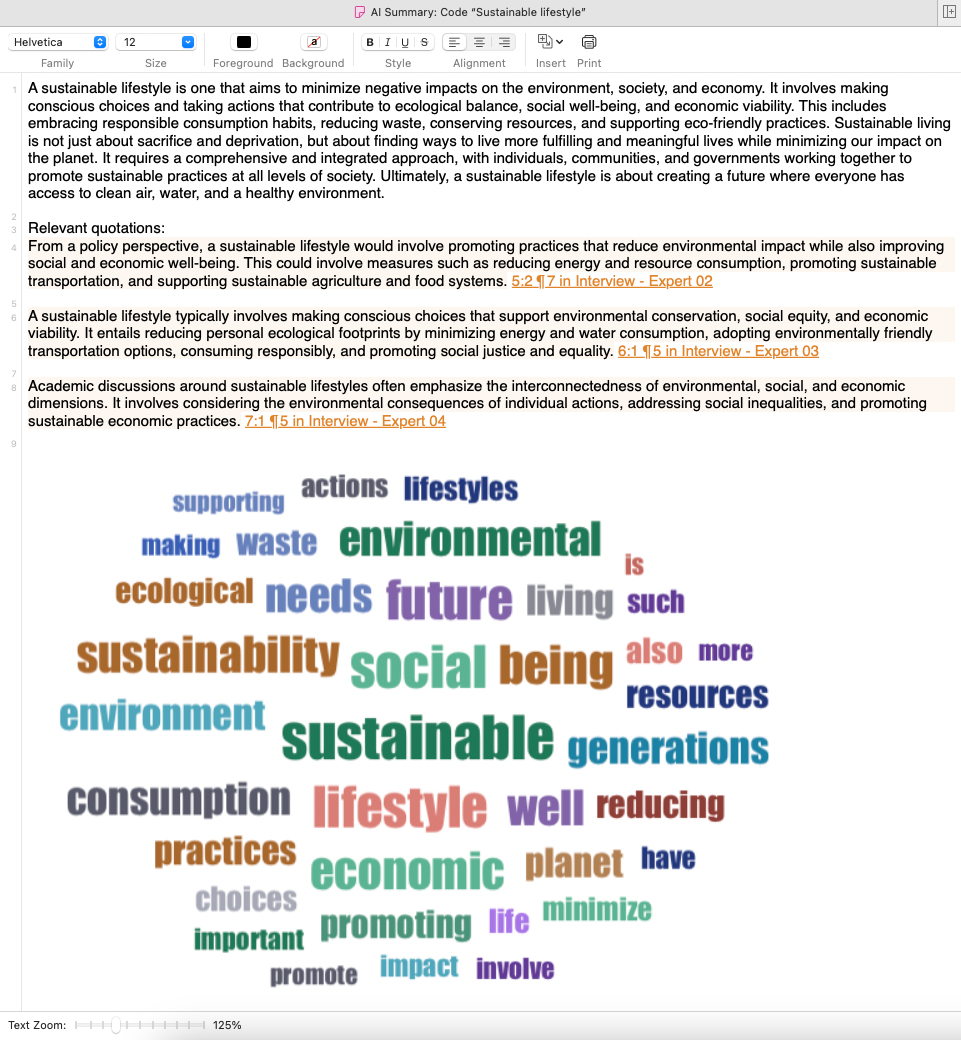
User Interface and Usability
ATLAS.ti's user interface is designed with usability in mind, offering a clean and organized layout that enhances the qualitative research experience. The interface allows users to easily navigate between different project components, such as documents, codes, and memos, within a single window, minimizing clutter and improving workflow efficiency. The centralization of tools under easily accessible menus ensures that researchers can quickly find and use the features they need. In contrast, Dovetail’s interface, while user-friendly, lacks the same level of integration and customization options, which can limit its effectiveness for more complex projects. ATLAS.ti's streamlined design supports both novice and experienced users, making it a versatile choice for qualitative data analysis.

Data Organization and Management
ATLAS.ti provides powerful data organization and management, offering tools that allow researchers to categorize and sort data with exceptional flexibility. The platform’s Document Manager enables users to group documents by multiple categories, such as data types, data sources, data collection methods such as interviews or focus groups, or participant demographics, without being restricted by a rigid file structure. Moreover, project data can be exported as spreadsheets for statistical analysis in other programs for greater flexibility. This allows for a more nuanced organization that supports complex analysis from various perspectives. In contrast, Dovetail offers a more straightforward approach with a simple interface for data management, which may suffice for smaller projects but lacks the sophistication needed for extensive qualitative research. ATLAS.ti's ability to handle large, multifaceted projects makes it the preferred choice for researchers who require detailed and dynamic data organization.
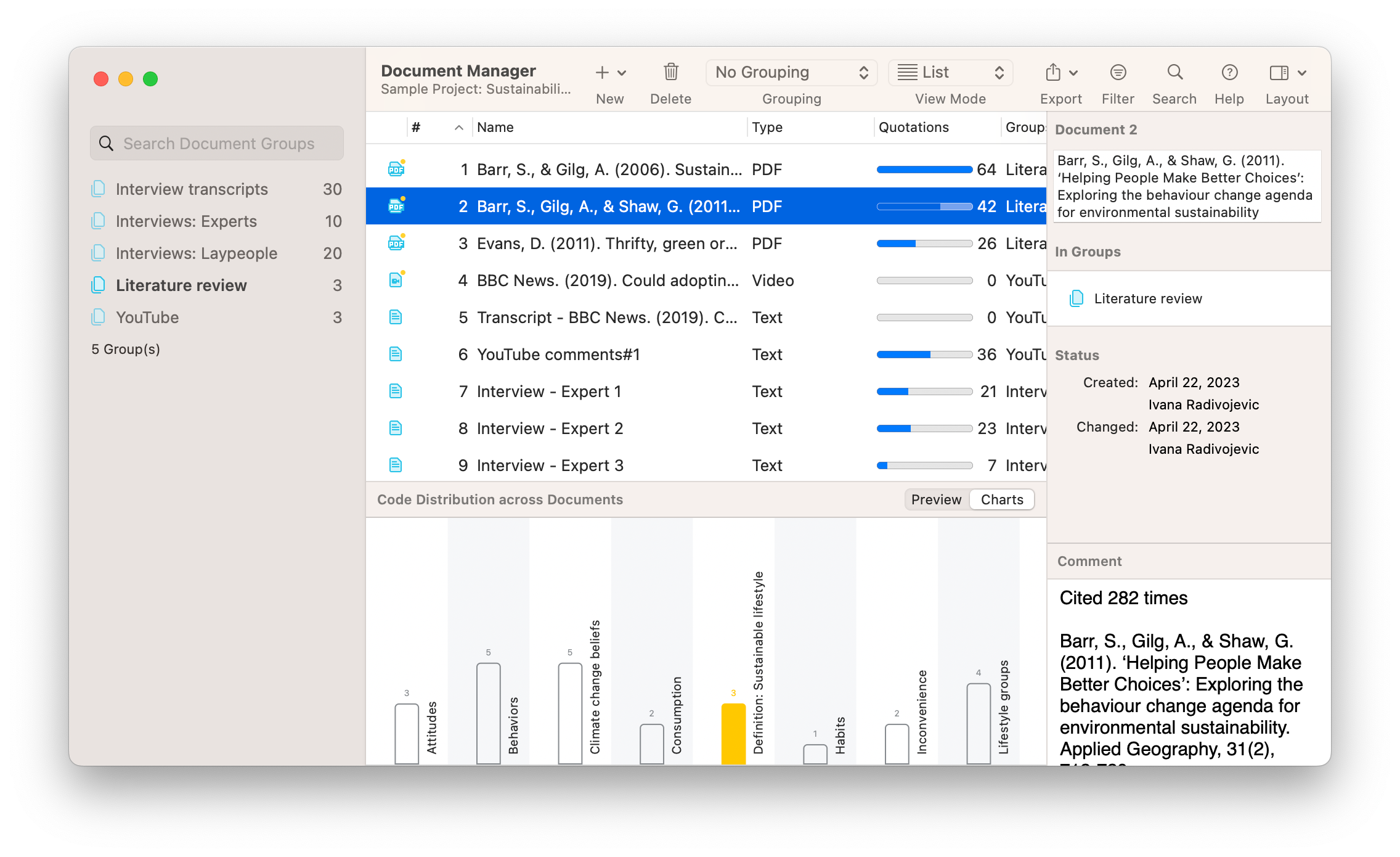
Teamwork and Collaboration
ATLAS.ti offers robust collaboration and teamwork features that are essential for qualitative research projects involving multiple team members. The platform supports real-time collaboration through ATLAS.ti Web, allowing team members to code and analyze data simultaneously, regardless of their location. This feature is complemented by cloud storage for ATLAS.ti Mac and Windows, which facilitates easy project sharing, data management, and tools for intercoder agreement. Unlike in Dovetail, ATLAS.ti can help researchers analyze the level of agreement among research team members in terms of coding. Overall, ATLAS.ti's ability to support unlimited team members and seamless project sharing makes it the superior choice for collaborative research.
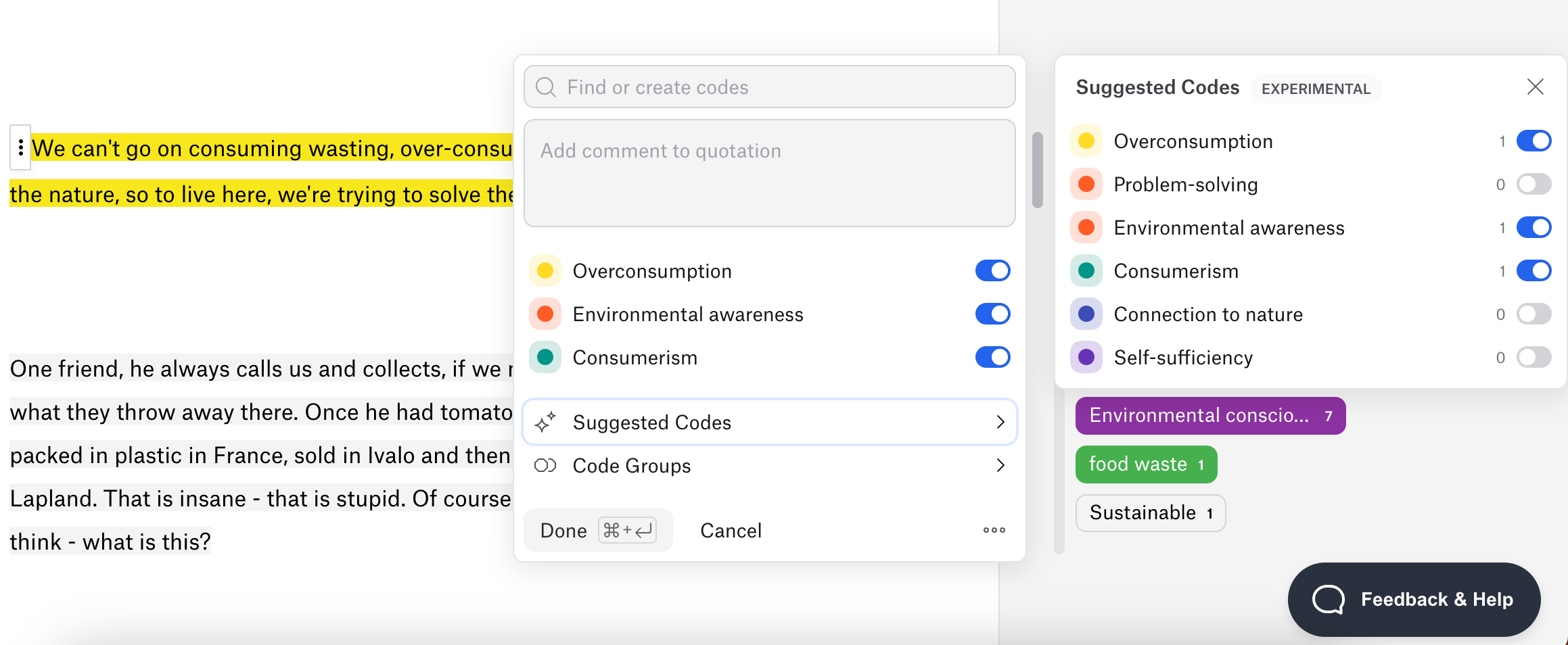
Data Types and Compatibility
ATLAS.ti offers superior compatibility with a wide range of data types, making it highly versatile for qualitative research. The platform supports various file formats, including text, PDF, images, audio, video, and even geographic data, allowing researchers to incorporate diverse sources into their projects. This flexibility extends to handling complex data types, such as comments in PDFs or multimedia files, which can be directly integrated into the analysis. In contrast, Dovetail’s compatibility is limited to text, video, and audio files, which can constrain researchers working with diverse datasets such as eBooks and geographic data. ATLAS.ti’s broad compatibility ensures that researchers can manage and analyze all relevant data within a single, cohesive platform, making it an ideal choice for projects that require comprehensive data integration.
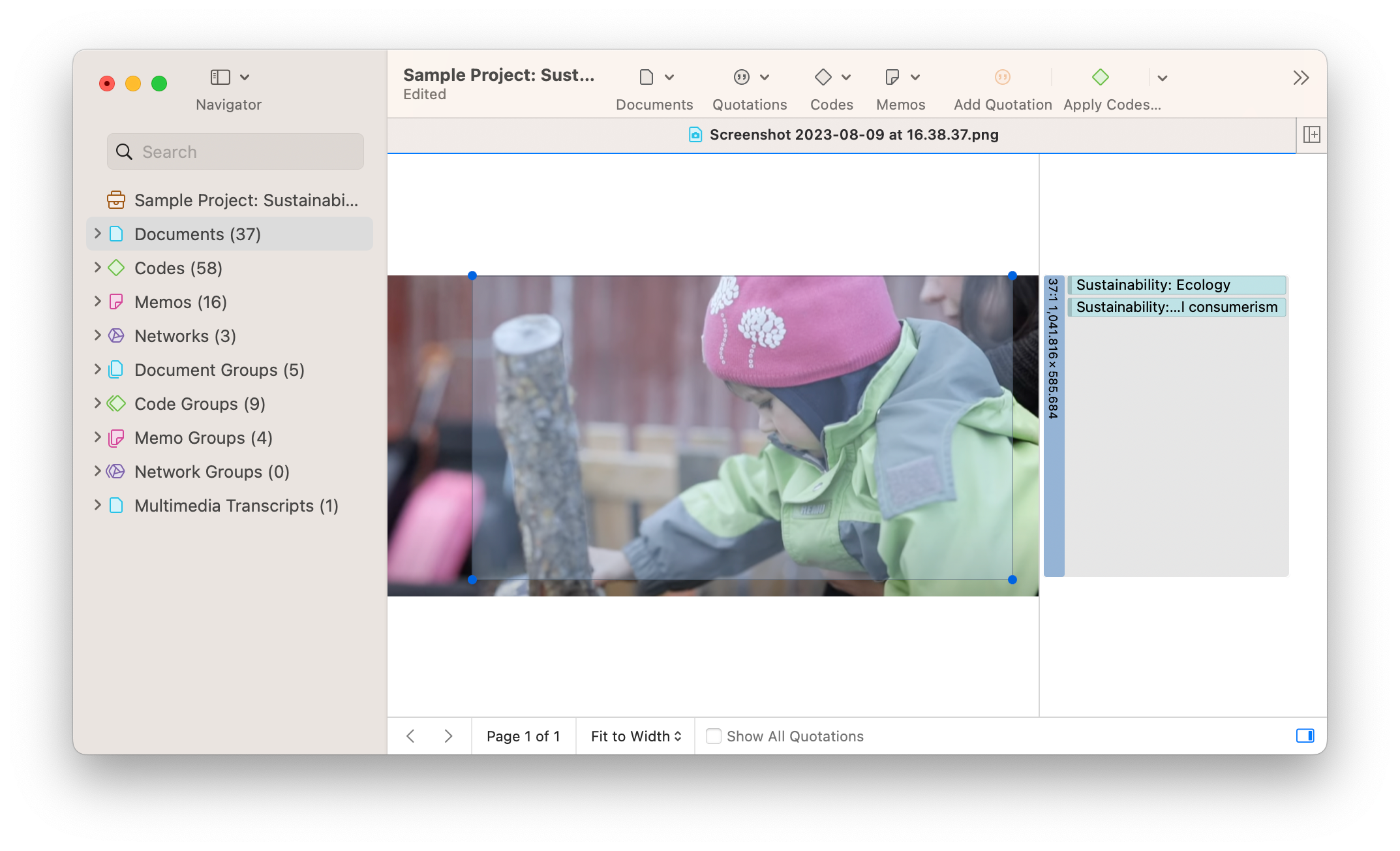
Survey Analysis Tools
When it comes to survey analysis, ATLAS.ti offers a powerful suite of tools that cater to both qualitative and mixed-methods research. Researchers can import survey data directly into the platform and apply coding to open-ended responses, enabling them to identify patterns and themes with precision. ATLAS.ti's automated tools, such as AI Coding and Sentiment Analysis, further enhance the analysis by quickly categorizing responses and identifying actionable insights. While Dovetail is capable of handling basic survey data, ATLAS.ti’s ability to seamlessly integrate survey data with other qualitative data types makes it the ideal choice for researchers looking to conduct comprehensive survey analyses, offering detailed insights that are critical for data-driven decision-making.
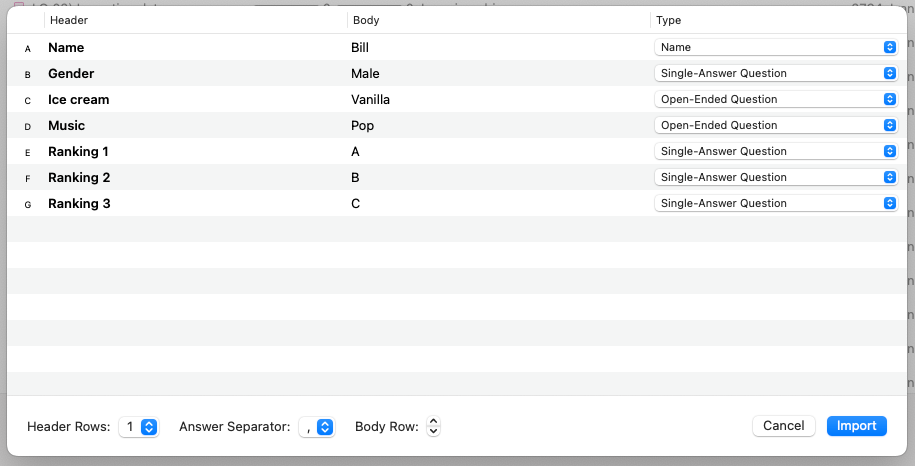
Support and Training
More than the software itself, ATLAS.ti provides greater support to ensure qualitative researchers have all the resources they need to make data-driven decisions through their research. While Dovetail provides support only through email and has limited online resources like webinars and sample projects to guide researchers, ATLAS.ti users enjoy more options to assist them with every step of the research process. For all questions and issues great and small, from technical support to methodological guidance, ATLAS.ti provides live support via telephone, email, and chat, 24 hours a day, five days a week. This perpetual support complements ATLAS.ti's extensive resources and live webinars on qualitative research methods and data analysis available for free, ensuring that you have everything you need to analyze your data and generate valuable insights from your research.
